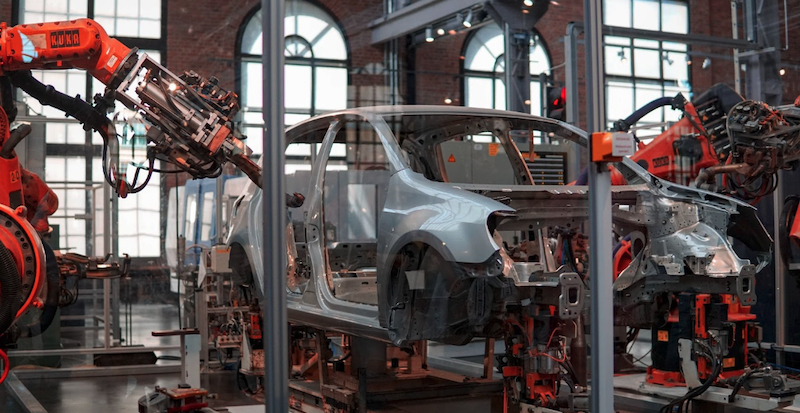4 UX Design Strategies for Improving Driver Safety in the Fleet Industry
On average, 4.5 accidents per driver per year occur in the fleet industry. Any of which could be fatal, taking their lives.
Reasons? There are many, but they can be generally classified as driver-side problems or system-side.
Employing the right UX design strategies minimizes both drive-side and system-side problems to a great extent, improving overall driver safety in the fleet industry.
This article briefs some of the fleet industry challenges related to driver safety and explains how a good UX design can solve them.
It further mentions a few stellar UX design strategies that you can apply to ensure the safety of your next breakthrough technology in the fleet industry.

Let’s explore them.
Fleet industry problems that UX design solves
Many safety-related problems in the fleet industry are a result of a vehicle’s bad UX design, especially in the current era of automated features. By focusing on ux problems to solve, the fleet industry can significantly improve driver safety.
Automobile companies operate in a highly competitive landscape, continuously striving to innovate and develop differentiating features to remain competitive.
The current path of this industry ends with full automation of the vehicles. To define this path, the SAE International, an international standardization organization, has divided it into six stages:
- Stage 1: no automation
- Stage 2: driver assistance
- Stage 3: partial automation
- Stage 4: conditional automation
- Stage 5: high automation
- Stage 6: full automation
Currently, the industry has reached stages 2 and 3. At both these stages, the automation in vehicles still requires the supervision of the driver to ensure their safety.
You can’t enjoy a power nap putting your vehicle on self-drive just yet. To ensure your safety, you must remain wide awake and monitor the vehicle and environment while using stage 2 and 3 features.
Even if the vehicles support features that let them take their feet off the pedals or hands off the steering wheel, the drivers must continuously supervise the system.
So, for example, you are using a stage-3 feature, lane centering, that relies on certain sensors to provide you with partial automation.
You are driving on a highway, and your hands are off the steering wheel as you’re using lane-centering automation. The road ahead is damaged and the supporting sensors suddenly malfunction due to certain environmental factors such as sharp sunlight, dirt, frost, or fog.
You run a risk of an accident, right?
You’ll panic at the time of this uncertainty. Imagine being unable to locate the right buttons due to a new interface with a bad UX design. Worst, isn’t it?
Similarly, imagine trying to operate a new automation feature that has an unusual user interface. Since it will require more of attention, the driver will get distracted, risking their safety.
The driving patterns also vary across cultures. A driver in a Western country like Canada significantly differs from an Eastern driver from UAE in terms of their driving behavior.
So, a standardized automation feature might not be used the same way in both of these cultures, risking the drivers’ safety.
4 UX design strategies that improve driver safety
Most of the above-mentioned scenarios are ux problems. The following UX design strategies help solve them.
There can be multiple classifications of design strategies. In this article, however, they’re classified in terms of the goal each tries to achieve: innovation, satisfied users, business growth, and leveraging data.
1. Innovation-centered UX design strategy
Employing an innovation-centered UX design strategy requires continuous research and development to bring new features aimed toward drivers’ safety in the fleet industry.
For example, fleet managers have to continuously inspect the vehicles to ensure their good health. If any problem occurs, they often fill out or get a work order form filled out by the vehicle inspector.
This form describes the repair and maintenance work required by a vehicle and is intended for the use of technicians and the company’s record-keeping.
It’s an opportunity to innovate this function. With the use of automation, an innovative feature can be introduced to replace this manual work with software that fills a maintenance work order template in real time and notifies the fleet manager.
It can be optimized to detect the problems right at the time they occur and keep a record of mandatory periodical maintenance to trigger a notification.
It ensures safety as the fleet manager and driver would be aware in real-time if any problem occurs. It also enhances the user experience of both fleet drivers and fleet managers as they don’t have to worry about vehicles running out of necessary oils or having any unexpected problems.
Similarly, an innovation-centered design strategy brings many helpful features aimed at driver safety enhancement.

2. User-centered UX design strategy
A user-centered UX design strategy requires learning about user behaviors, patterns, and preferences.
The first step of a user-centered approach is to conduct user research.
It involves:
- Conducting user interviews;
- Observing their behaviors; and
- Analyzing their feedbacks.
User research helps to know the needs and goals of consumers. It identifies the pain points and frustrations of users which are used to optimize or add safety-enhancing features to the vehicles.
3. Data-driven UX design strategy
Fleet managers gather data such as fleet drivers’ behavior, fuel consumption, feature usage pattern, and much more.
They can leverage this data to improve drivers’ safety. By learning the driver’s behaviors, they can identify the reasons that risk their safety.
For instance, distractions. Is the system so complex that the drivers get distracted from the road while operating it?
By analyzing their usage patterns, they can identify the system’s flaws. Eliminate those flaws by improving the system’s UX design and simplifying its user interface.

4. Business-centered UX design strategy
Employing a business-centered design strategy means improving the UX design of your offerings to align them better with your business’s goals.
Businesses continuously try to develop new core competencies that give them a competitive advantage over their competitors.
For example, you have developed the most advanced lane-centering feature in the industry. You have highly enhanced driver safety by improving its UX design.
You will be able to sell more than your competitors, accomplishing your business goals of earning more profits or expanding your market share.

Driver safety is paramount
Nothing is costlier than a life. That’s why, when testing any new feature or development in a vehicle, drive safety must be considered paramount.
Currently, there are certain challenges that the fleet industry faces in terms of drivers’ safety. The vehicles come equipped with new technology, unusual to drivers, increasing the risk to their safety.
Every fledgling technology brings new, unexpected challenges and problems. Similarly, automation has brought these challenges to the fleet industry.
However, these problems can be solved by incorporating UX design strategies that are explained in this article.
A good UX design ensures that the user interfaces are simple and tailored to users’ usage patterns and behaviors, ensuring excellent user experience and minimizing the occurrence of any problems.

Author’s bio: Saifullah Napar is a content writer who has worked in this field for the past three years. He has been writing on business technology, blockchain, fintech, and digital marketing topics.

